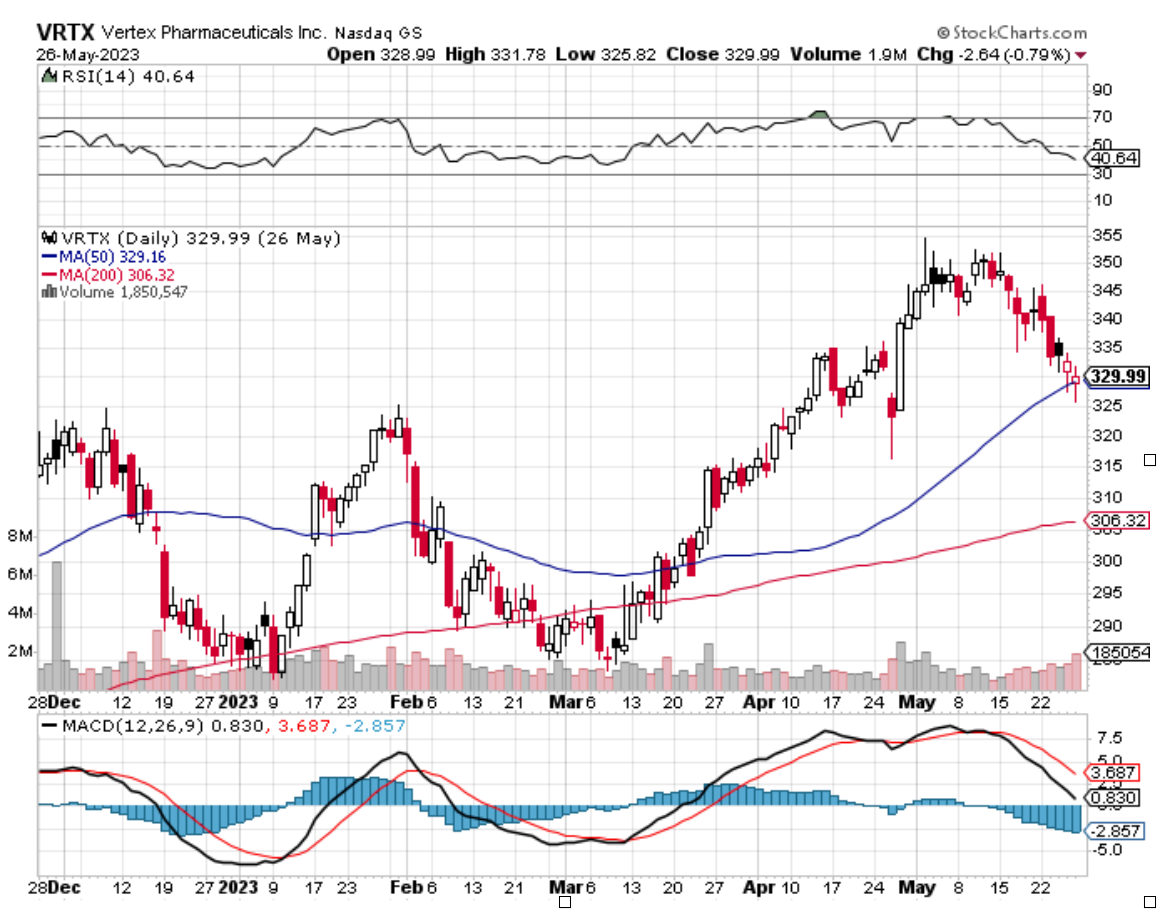Biotech companies possess an extraordinary power: the ability to soar to great heights with just a handful of successful drugs.
An excellent example of this phenomenon is the remarkable ascent of Moderna (MRNA), a visionary biotech firm that catapulted from a $4 billion valuation to an astounding $52 billion.
The secret behind its meteoric rise? The resounding triumph of its coronavirus vaccine not only sparked hope in the hearts of millions but also propelled its stock price to a staggering 100% surge over the past three years.
But it's not just about a momentary triumph. Some biotech geniuses focus on concocting life-altering remedies for tricky-to-tackle diseases, which demand regular treatment for the long haul.
This is where Vertex Pharmaceuticals (VRTX) truly shines.
Vertex, the biopharmaceutical juggernaut born in 1989, has orchestrated a stunning 636% surge in annual revenue over the past decade. While maintaining such an astronomical growth trajectory might prove challenging, the company’s formidable pipeline harbors the potential to fuel its rise for yet another decade.
The shining star of Vertex’s portfolio these days is none other than Trikafta, a groundbreaking medicine combatting the relentless foe known as cystic fibrosis (CF).
This blockbuster drug singlehandedly generated $7.6 billion in revenue in 2022, constituting the lion's share of the company's overall product revenue, amounting to $8.9 billion.
In fact, in the first quarter of 2023, Trikafta contributed an astounding $2.1 billion to Vertex's $2.3 billion total product revenue.
At present, Vertex's revenue stream flows exclusively from CF medications, with the company projected to rake in $9.5 billion to $9.7 billion for the entire year from these products alone.
Here's another fun fact that further cement Vertex’s dominance in the CF world: other contenders in the cystic fibrosis domain have stumbled and faltered, leaving the landscape desolate with scarce rivals.
AbbVie (ABBV) has thrown in the towel, abandoning its CF program altogether. It's no wonder Vertex's triumphant creation is now in higher demand, hailed as a proven champion in the ring of battle.
However, Vertex is no stranger to the importance of diversifying its revenue streams.
While the company has a standout product, it recognizes the risks of relying solely on its success. That's why Vertex is boldly venturing into various other programs.
Teaming up with CRISPR Therapeutics (CRISP), it recently wrapped up the regulatory submissions for exa-cel, an innovative gene therapy designed to combat both beta-thalassemia and sickle cell disease.
The potential approval of exa-cel could catapult Vertex into a whole new realm of breakthrough treatments.
But that's not all.
Vertex's pipeline boasts a promising therapy called inaxaplin, currently in pivotal studies, which targets APOL1-mediated kidney disease—a condition affecting more patients globally than CF. Furthermore, the company's early-stage clinical testing program holds the potential to cure type 1 diabetes. Vertex also has its sights set on tackling type 1 diabetes, harnessing the power of CRISPR's cutting-edge gene-editing technology known as CRISPR-Cas9.
Evidently, Vertex has aggressively invested in new ways to expand its portfolio. Its first-quarter report showed that the company allocated a staggering $742 million in research and development.
This substantial investment underscores Vertex’s determination to continue launching groundbreaking therapies worldwide.
Vertex also has significant milestones on the horizon, including the completion of a late-stage study for its vanzacaftor triple-drug therapy targeting cystic fibrosis (CF) by the end of 2023.
Additionally, late-stage testing for VX-548, a potential acute pain treatment, is expected to conclude later this year or early 2024.
Although it may take time for these therapies to reach the market, even with positive results, it’s reasonable to believe that their future regulatory approvals seem to be slam-dunks.
Moreover, both therapies hold tremendous revenue potential for Vertex. The vanzacaftor triple-drug therapy has the potential to become the company's most profitable CF treatment, while VX-548 could serve as a blockbuster non-opioid painkiller.
To add to its strengths, Vertex enjoys a strong balance sheet with a substantial cash stockpile of $11.5 billion as of last March. I fully expect Vertex to leverage this financial strength for strategic business development deals and stock buybacks.
With a strong balance sheet, ongoing drug development efforts, and the potential to become a frontrunner in the biotech industry, I believe that Vertex has the potential to become a monster stock over the next decade.

